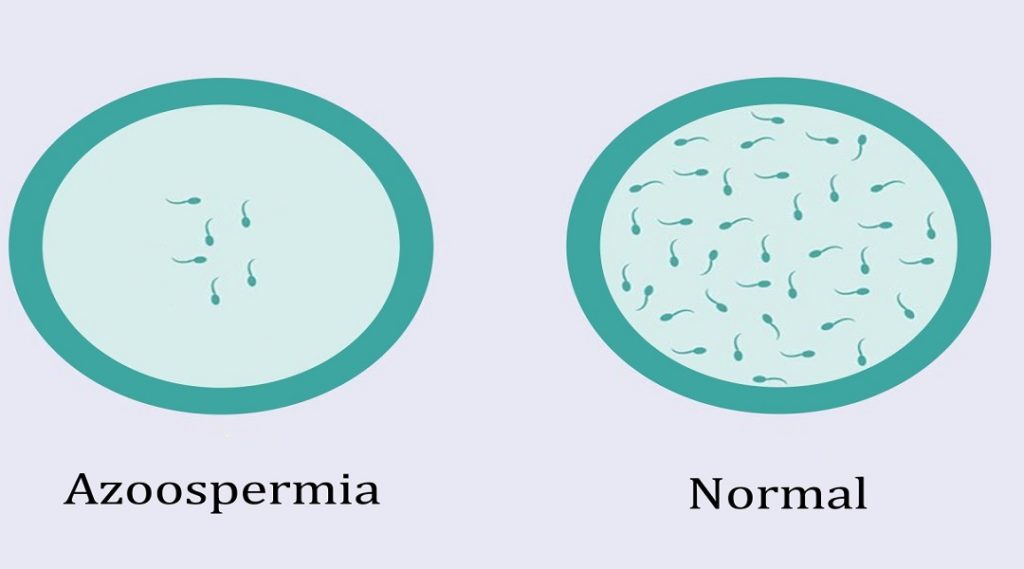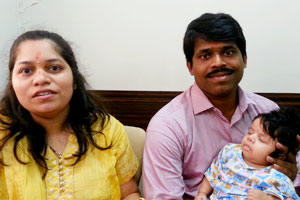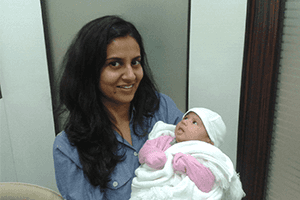If you are looking for a natural treatment for azoospermia to have your own baby naturally with your own sperms, then you are at right place.
Azoospermia is a situation when the sperm count in the semen is zero or nil. It can be a very desperate situation and may need donor sperms or our proven Homeopathy medicines for azoospermia to increase sperm count. You can choose the treatment option that is best suited for you.
Why Welling Homeopathy’s Natural Remedies for Azoospermia?
- We are the largest chain of Homeopathic clinics specialising in Infertility treatment in men,
- The treatment is safe, non-hormonal and doesn’t have any side effects,
- The treatment also helps in premature ejaculation or impotence,
- We have a 62% success rate after the first cycle of our treatment,
- After our custom-made Homeopathy treatment for Azoospermia, your wife can conceive naturally, which is good for your wife and also for your baby,
- We have happy satisfied couples from 108 countries and growing.
Call +91 8080 850 950 to book an appointment or to consult and order online, your custom-made Homeopathy medicines for azoospermia.

The most common cause for this type of infertility is an obstruction to spermatogenesis — the process that produces mature sperm cells from immature ones. This can be due to damage to the seminiferous tubules and/or epididymis, as well as other factors such as inflammation, infection, injury, surgery, radiation exposure, genetic disorders, hormonal imbalances, medications, toxins, etc.
There are two types of obstructions: congenital and acquired. Congenital causes include achondroplasia, hypogonadotropic hypogonadism and Klinefelter’s syndrome. Acquired causes include testicular torsion, trauma, varicocele, cryptorchidism, vasectomy reversal, chemotherapy-induced toxicity, retrograde ejaculation, surgical removal of the prostate gland, and iatrogenic causes including surgeries.
Are There Different Types of Azoospermia?
 There are two main categories of azoospermia: obstructive and non-obstructive. In an obstructive type, there is some obstruction preventing the passage of sperm from the seminiferous tubule into the epididymal lumen. This could occur at any point between the testes and the vas deferens; however, this is usually due to inflammation or infection within the epididymides. Non-obstructive azoospermia occurs without evidence of blockage in either the seminiferous tubular system or the epididymal ducts. The exact mechanism behind these cases remains unknown.
There are two main categories of azoospermia: obstructive and non-obstructive. In an obstructive type, there is some obstruction preventing the passage of sperm from the seminiferous tubule into the epididymal lumen. This could occur at any point between the testes and the vas deferens; however, this is usually due to inflammation or infection within the epididymides. Non-obstructive azoospermia occurs without evidence of blockage in either the seminiferous tubular system or the epididymal ducts. The exact mechanism behind these cases remains unknown.
What Are The Causes of Azoospermia?
In general, it’s important to note that all men have varying degrees of fertility potential based on their age, lifestyle choices, medical history, genetics, environmental exposures, etc. However, if you do not produce enough semen during sexual intercourse, then your chances of conceiving naturally decrease significantly. There are many possible reasons why someone may experience azoospermia. Some of them will require treatment while others won’t.
The common causes of azoospermia are listed below:
- Genetic conditions
- Testicular cancer
- Varicoceles
- Cryptorchidism
- Trauma
- Chemotherapy-related side effects
- Surgical complications
- Radiation therapy
- Prostate disease
- Urethral stricture
- Iatrogenic causes
- Infectious diseases
- Autoimmune diseases
Pre-testicular azoospermia is caused by problems with the production of testosterone before they reach the testicles. It affects about 1% of males under 40 years old. Causes include pituitary tumors, adrenocortical insufficiency, hyperprolactinemia, gonadal dysgenesis, hypothalamic dysfunction, and idiopathic forms. Treatment involves hormone replacement therapies.
Post-testicular azoospermia is caused by defects in the maturation of germ cell precursors after leaving the testicle. These cells fail to mature properly and thus cannot leave the testicle. They remain trapped inside the testicle where they die off. Post-testicular azoospermia accounts for approximately 10–15% of male infertility. Common causes include chromosomal abnormalities, endocrine disturbances and infections.
Obstructive azoospermia is when sperms can pass through the tubes but get stuck somewhere along the way. OA is often associated with other health issues such as low levels of hormones like LH and FSH. If left untreated, OA leads to sterility. Treatments vary depending upon the cause of the problem. For example, surgery might be required to remove scar tissue blocking the tube. Other treatments involve medications that help increase the level of sex hormones.
Non-obstructive azoospermia is also known as Klinefelter syndrome. In most cases, there is no obstruction in the reproductive tract. Instead, non-obstructive azoospermia results from genetic mutations affecting Sertoli cells, Leydig cells, or both. Most patients with KFS have normal intelligence and physical development. However, some people develop hypogonadotropic hypogonadism, meaning they don’t make sufficient amounts of certain hormones needed for reproduction.
Sertoli cell-only syndrome is another type of non-obstructive azoospermia. This condition occurs due to an abnormality in the formation of sperm within the seminiferous tubules. The affected person has only Sertoli cells present in his/her testes. As a result, he/she does not produce any sperm at all.
Kallmann’s syndrome is characterized by lack of smell, absence of pongy sense, and abnormal facial features.
Azoospermia due to testicular failure is called cryptorchism. Cryptorchism may occur spontaneously during fetal life or it may be surgically corrected shortly after birth. A child born without a penis will usually have a small phallic structure that looks similar to a clitoris. Some children who were circumcised later on develop a penile appendage resembling a glans penis.
Azoospermia due to ejaculation dysfunction is termed retrograde ejaculation. Retrograde ejaculation happens when semen travels back into the bladder instead of out of the urethra. Ejaculate contains millions of motile spermatozoa; however, if this fluid returns back up the urinary tract, few sperm are able to travel down the urethra. Men suffering from retrograde ejaculation experience painful urination because their prostate gland produces too much seminal fluid.
Azoospermia due to radiation therapy is caused by exposure to high doses of ionizing radiation. Radiation damages DNA in the germline cells, causing them to stop dividing and eventually become sterile. It takes years for these effects to manifest themselves.
Testicular cancer is one of the leading cancers among men between 15 and 35 years old. Testicular tumours account for 1% of malignancies in males aged 20–34 years. About 90% of testicular neoplasms arise from germ cells.
What Is Azoospermia Treatment?
The common treatment for azoospermia includes medication, assisted reproductive technologies, microsurgery, cryopreservation of gametes, and even adoption. Medication treatments involve using drugs like clomiphene citrate, human chorionic gonadotropin injections, testosterone replacement therapies, and aromatase inhibitors. ART involves fertilizing eggs outside the body with donor sperm or embryos created through IVF. Microsurgeries use tiny instruments to repair damaged tissue inside the male genital tract.
Treatment with the extraction of sperm can also help patients conceive naturally. Cryopreservation of sperm allows individuals to store sperm so that they can preserve fertility in case something goes wrong. Adoption is a last resort option where couples look for someone else to carry their baby.
What Is Artificial Insemination For Azoospermia?
Artificial insemination is a method used to artificially impregnate women with sperm. AI uses a syringe filled with sperm to penetrate the woman’s cervix.
Can Azoospermia Be Prevented?
No, it’s not possible to prevent azoospermia but we can try our best to reduce the risk factors associated with infertility. These risks include smoking, alcohol consumption, obesity, diabetes mellitus, high blood pressure, heart problems, sexually transmitted infections, pelvic inflammatory disease and endometriosis. If one has more than three of these risk factors, he/she should seek help as soon as possible.
Which Is The Test For Azoospermia?
The common test for azoospermia is semen analysis and hormone tests. SA measures how much sperms are produced by each ejaculation. It also checks whether they move properly towards the penis.
Hormone testing helps determine what hormones might be affecting the production of sperm cells. A doctor would take samples of blood and urine before performing a physical examination. He/She would look for signs of prostate enlargement, varicocele, cysts, tumours, scarring, and other abnormalities.
Best Homeopathy Medicine For Azoospermia.
If you wish to conceive naturally without the need for artificial treatment, you must start our natural treatment for Azoospermia at the earliest.
Call +91 8080 850 950 to book an appointment or to consult and order online, your custom-made Homeopathy medicines for azoospermia.







